Reviews
Das weiße Band
Michael Haneke
Austria / Germany / France / Italy, 2009
Credits
Review by Leo Goldsmith
Posted on 08 October 2009
Source Sony Pictures Classics 35mm Print
Categories The 47th New York Film Festival
In Michael Haneke’s The White Ribbon, the whiteness is blindingly bright. Sunlight pours through the window of a dark cottage, more glaring than in any Vermeer; a child’s flaxen hair glows angelically; and new snow on an expanse of field hurts our eyes, just as the narrator says it does. The black-and-white world of early 20th century Germany that Haneke presents is one of crisp, brilliant images whose very clarity is something suspicious.
And yet clarity, however provisional, is the film’s purpose. We hear this from the narrator, who as a younger man served as a schoolteacher in a small rural town. Speaking many years later, he offers a disclaimer about this narrative—“I don’t know if the story I want to tell you is entirely true.” The senses both of doubt and of urgency that pervade the film are thereby introduced and soon echoed in the visual field. The story’s events - a strange, often brutal series of crimes committed in that small village - are set in motion in the film’s first shot: the village doctor rides his horse across the field and, primed by the narrator, we brace for the moment when he will have a violent accident. Haneke presents this scene with a split-second of digital animation—not enough to shock us out of the film, but nonetheless a hint of doubt cast on the sharp, pristine images that he then presents us with.
One of the hallmarks of Haneke’s aesthetics is this sharp, pristine image, the precision with which he blocks, composes, and cuts his sequences. This style is one that announces itself to the viewer: we sense not only Haneke’s mastery of his craft, but also that we ought to be noticing it, that we are entirely in his authorial hands. His is an ultimate, inescapable clarity rendered in these bright, precise images, prompting some to compare him to Hitchcock and others to despise his film’s penchant for emotional manipulation, pedantry, and brisk austerity.
But curiously, Haneke is also one of the great critics of the image, and all of his films imply doubt about what they show and where it comes from. The, unsettling POV shots in Code Unknown and Caché serve to work on the audience only a more subterranean form of the same dread as the video-manipulation moments of Funny Games (which, for the record, I didn’t think was that funny the first time). The White Ribbon’s gentle, conspicuously self-effacing narrator is merely another (albeit more traditional) way for Haneke to call attention to perspective, to cast doubt on memory, history and interpretation, even as he presents horrors that are difficult to ignore or to explain away.
And these horrors are as unsparing as any in Haneke’s other work, even if they are made murky by the veil of history and rumor. The doctor is thrown from his horse by a carefully laid tripwire; a local tenant farmer’s wife dies in a sawmill accident; the son of the wealthy Baron is kidnapped, tethered, and whipped. These bizarre events set the members of this very Protestant community on edge, sending them into mutual suspicion and deep unease. As events increase and worsen, the film (through the schoolteacher’s tacit narration) speculates on the murky backstories of the town’s inhabitants, with special emphasis on the local children (whom we never actually see him teach). The Pastor’s children, in particular, lead a life of austerity and self-denial, exemplified in a scene of parental and religious strictness that’s reminiscent of the analogous one in Bergman’s Fanny and Alexander. (There are shades of Dreyer throughout, as well.) Denying the entire family dinner as punishment, the Pastor father, so sickened by his son and daughter’s behavior and by the “necessary” task of beating them, recoils at the children’s attempt to touch him. Haneke is at his most Hawthornian when the Pastor gives them his final punishment: to wear a white ribbon, symbol of purity and innocence, as a reminder.
Which is not to say the movie is without its lighter moments. It may seem the most unlikely gallows humor, but it’s hard not to laugh when fourteen-year-old Anni has to explaining that “everyone has to die” to her painfully adorable little brother, or when the Pastor details to a terrified Martin the symptoms that accompany the sickness that is self-abuse (fatigue, pustules, rapid aging). But then, Haneke doesn’t get quite enough credit for the respect - would it be too much to call it a fondness? - he has for some of his characters. At least, Haneke gives his audience a certain comfort by allowing them to identify with certain protagonists: the nervy resilience of Anne in Time of the Wolf, a refreshingly balanced portrayal after Huppert’s hot mess in The Piano Teacher; the guilty defensiveness of Daniel Auteuil’s everyman Georges in Caché, whose breakdown in his kitchen after a day searching for his missing son is truly wrenching and pitiable. (The Funny Games films have none of these, which is part of their point. We fight identification in those movies.)
In the schoolteacher and his beloved, Eva, whose timid, delicate, and totally proper courtship the film spends a great deal of time in telling, Haneke fashions two wholly sympathetic characters, people trying to do right and lead honest straightforward lives. Their only crime, even under Haneke’s heavy judgment, is their possession of a naïveté about people, an inability to comprehend the complexities of human wickedness that seems in any case forgivable. In many ways, they are the film’s real children, and while I’m sure some viewers will find this portrayal condescending on the director’s part, the performances by these actors is forthright and occasionally touching—not the first reaction one expects from Haneke.
But Haneke’s protagonist is still a teacher, and the film increasingly asserts its air of pedantry, especially in its final scenes. As events turn darker, the film exposes the rotten hypocrisies of the town - which number incest, self-hate, animal murder, and child cruelty of every conceivable stripe among them - and the impression that we are to be taking something instructive from the film, perhaps something to do with the seeds of Nazi Germany, makes the experience seem fairly contrived, indeed. In spite of its ethereal, uncanny imagery and occasionally more humane moments, The White Ribbon demonstrates a fairly one-sided view of parents and their children, and its supposed application to the “what happened later” that the narrator vaguely defines is strangely simplistic for such a thoughtful filmmaker. Still, there is a final irony in Haneke’s title, as the film itself is something of a white ribbon: a haughty reminder of what is pure, clear, and true that ends up having the opposite effect.
More The 47th New York Film Festival
-
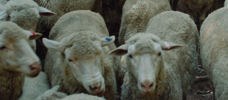
Sweetgrass
2009 -
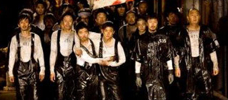
Kanikosen
2009 -
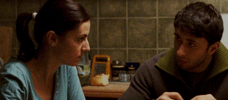
Police, Adjective
2009 -
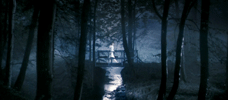
Antichrist
2009 -
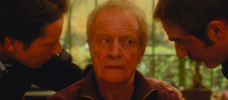
Wild Grass
2009 -
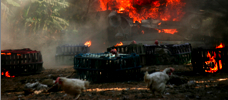
Lebanon
2009 -
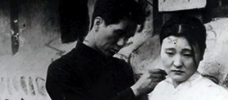
Crossroads of Youth
1934 -
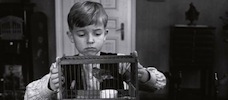
The White Ribbon
2009 -
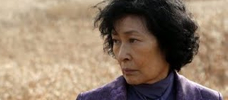
Mother
2009 -
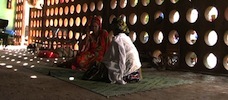
Min Ye
2009 -
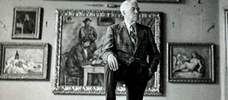
The Art of the Steal
2009 -
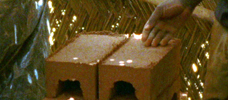
In Comparison
2009
We don’t do comments anymore, but you may contact us here or find us on Twitter or Facebook.



